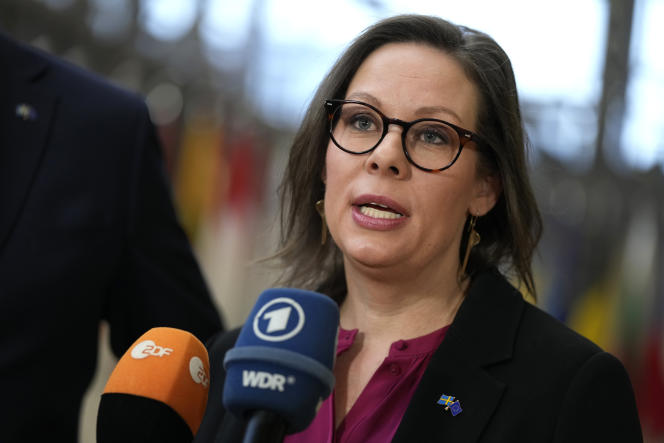“A historic day” for Maria Malmer Stenergard, the Swedish Minister for Migration. “An extremely important step for the management of migration in the European Union [UE] », according to Ylva Johansson, the Commissioner for Home Affairs. And a great relief for all European leaders one year from the European Parliament elections.
It has been four years since the European Commission presented its draft pact on asylum and migration. And it was not until Thursday 8 June, in Luxembourg, that the ministers of the interior of the Member States finally reached an agreement on the main pillars of the reform of European migration policy: the establishment of a procedure compulsory accelerated procedure at borders and the principle of “compulsory solidarity” between States to relieve the countries on the front line in the face of irregular migration.
After years of sterile exchanges, the negotiations had intensified for eight months. Thursday, it took several breaks in the session to convince the last recalcitrant countries, such as Spain, Greece and Italy, to validate the political agreement. These three States, still cautious at the end of the afternoon, ended up supporting around 8 p.m. the last compromise text.
This was enough to tip the scales, because, in matters of migration, the decision is taken by qualified majority, which must involve 55% of the Member States (at least fifteen countries), representing 65% of the population of the ‘Union. The two regulations on asylum and migration management and border procedures were supported by 21 countries. Only Poland and Hungary, long-time opponents, voted against these laws. Bulgaria, Malta, Lithuania and Slovakia abstained.
Compulsory examination at the border
The length and intensity of the debates clearly reflect the political sensitivity of this subject, which has returned to the top of European priorities since the acceleration, after the pandemic, of irregular arrivals in the Union. After detecting 330,000 irregular entries in 2022, the European border and coast guard agency, Frontex, recorded 80,700 irregular crossings at the EU’s external borders in the first four months of 2023. This is nearly 30% more than a year earlier and at the level of 2016, the peak of the migration crisis.
To facilitate and unify the management of this irregular migration, the Council adopted the principle of a compulsory examination at the border. “This will allow irregular migrants who are least likely to be eligible for international protection, refugee status, to have their applications processed in a timely manner”, says a European diplomat. Clearly, asylum seekers from countries deemed “safe” by Europe will see their application processed at the border. If they are rejected, they can be sent back to their country more quickly. According to Mme Johansson, “there is no reason why people from Albania, Pakistan or Turkey should be treated the same as people from Afghanistan, Syria or Sudan”.
You have 52.37% of this article left to read. The following is for subscribers only.
